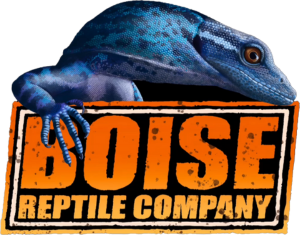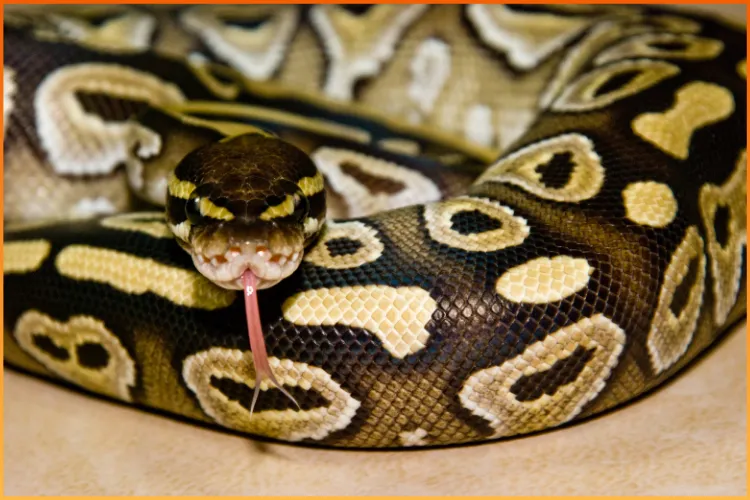Snakes come in all shapes, sizes, and temperaments, but the different types of snakes generally fall into five main categories:
1️⃣ Beginner-Friendly Snakes – Easygoing, low-maintenance, and perfect for first-time owners.
2️⃣ Non-Venomous Snakes – Safe to handle and commonly kept as pets.
3️⃣ Large Constrictor Snakes – Impressive in size and strength, suited for experienced keepers.
4️⃣ Venomous Snakes – Not for pets but important for ecosystems and education.
5️⃣ Exotic and Rare Snakes – Unique species prized for their striking colors and unusual traits.
Each type of snake has its own care needs, behaviors, and best practices. Whether you’re looking for a docile pet or just want to learn more about these fascinating reptiles, this guide covers everything you need to know.
Let’s explore the different types of snakes and find out which one is right for you!
Why Snakes Are Fascinating and Popular Pets
Snakes have charmed their way into the hearts of reptile lovers for centuries. With their sleek movements, diverse colors, and intriguing behaviors, it’s no surprise they’re popular pets. Unlike traditional furry friends, snakes offer a unique pet-keeping experience that’s both rewarding and captivating.
Their smooth and silent movements often evoke a sense of wonder and curiosity, making them a favorite among nature enthusiasts. Each species of snake displays its own personality and quirks, from the shy and reclusive ball python to the inquisitive corn snake. The diversity in the different types of snakes ensures that no two experiences of keeping them are the same, adding to their allure as pets.
Another reason snakes are so appealing is their aesthetic beauty. With patterns and colors ranging from the subtle earth tones of a Kenyan sand boa to the vibrant iridescence of a rainbow boa, they are living works of art. These natural patterns not only make them visually stunning but also serve as a reminder of their adaptability and evolution in the wild.
Their quiet nature is another major draw for snake enthusiasts. Unlike dogs or birds, snakes don’t bark, chirp, or demand constant attention. This makes them an excellent choice for individuals who want a pet but prefer a peaceful and serene home environment. Despite their low-maintenance lifestyle, snakes still manage to captivate their keepers through their fascinating feeding behaviors, shedding process, and ability to navigate their enclosures with grace.
Snakes are also incredibly diverse in size and care requirements, making them suitable for homes of all sizes and experience levels. The different types of snakes cater to various keeper preferences, whether someone is looking for a small and manageable species like a garter snake or an impressive and large constrictor like a Burmese python. This adaptability makes them a practical and rewarding pet for both beginners and seasoned herpetology enthusiasts.
For seasoned reptile lovers and newcomers alike, snakes represent an opportunity to connect with nature in a unique way. They teach us about patience, care, and the beauty of wildlife, making them more than just pets—they become a fascinating part of our lives.
An Overview of Snake Diversity
Behavior and Habitats
Snakes are found in nearly every environment on Earth, from lush rainforests to arid deserts. Their behaviors vary greatly between species. Some snakes, like corn snakes, exhibit calm and predictable behaviors that make them ideal for handling and observation. Others, like green tree pythons, are known for their striking perching habits and preference for arboreal living. This variety in behavior is one of the most fascinating aspects of the different types of snakes, showcasing their adaptability to a wide range of habitats.
In the wild, snakes thrive in diverse environments—from the humid jungles of Southeast Asia to the dry deserts of the American Southwest. Their ability to adapt to such extreme conditions highlights their evolutionary success. Understanding these natural behaviors and habitats is crucial for recreating suitable conditions in captivity. Providing the right environment not only ensures their physical health but also encourages natural behaviors, enriching the experience of keeping these incredible reptiles.
Care Requirements
Snake care varies significantly depending on the species, but some basic needs apply to all. A secure enclosure is essential to prevent escapes while offering enough space for the snake to move comfortably. Proper heating and lighting are equally important, as snakes are ectothermic and rely on external temperatures to regulate their body heat. Many of the different types of snakes require a temperature gradient within their enclosures to mimic natural conditions, allowing them to move between warmer and cooler areas as needed.
Diet is another critical aspect of snake care. Most pet snakes thrive on a diet of frozen-thawed rodents, such as mice or rats. The size of the prey should match the width of the snake’s head to ensure proper digestion. Species like ball pythons are known for their sometimes picky eating habits, while others, like king snakes, are more enthusiastic feeders.
Humidity levels and substrate choice also play a significant role in snake health. Species from tropical climates, such as the boa constrictor, require higher humidity levels to support proper shedding and overall well-being. On the other hand, desert species like the rosy boa thrive in drier conditions. Choosing the right substrate—whether it’s aspen bedding, cypress mulch, or paper towels—can help maintain appropriate humidity levels while keeping the enclosure clean and safe.
Regardless of the species, regular observation and routine maintenance are vital. Spot-cleaning enclosures, monitoring the snake’s health, and providing enrichment opportunities are all part of responsible snake care. With the right setup and attention, the different types of snakes can thrive in captivity, offering their keepers years of rewarding companionship.
The 5 Main Types of Snakes (With Examples)
Below, we break down the major categories of snakes to help you understand their unique traits and determine which might be the best fit for you. Each group of snakes comes with its own characteristics, care requirements, and levels of expertise needed, ensuring that reptile enthusiasts of all backgrounds can find a species that suits their preferences. Whether you’re searching for a low-maintenance pet or an exotic display animal, the diversity among the different types of snakes ensures there’s something for everyone.
Best Beginner Snakes (Easy-to-Care-For Types of Snakes)
For those new to snake-keeping, there are many different types of snakes that are beginner friendly and perfect for starting out. These species are known for their docile temperaments, making them easy to handle and less intimidating for first-time owners. Additionally, they typically have simple care requirements, which means you can focus on learning the basics of snake care without feeling overwhelmed. These beginner-friendly snakes are an excellent introduction to the fascinating world of reptiles and provide a rewarding pet experience for anyone looking to start their journey.
- Corn Snakes: Known for their calm temperament and stunning patterns, corn snakes are often the first choice for beginner keepers. Their ease of care and willingness to interact make them an ideal starter species. These snakes are highly adaptable and thrive in a range of enclosure setups, provided their basic needs are met.
- Ball Pythons: Compact and gentle, ball pythons are beloved for their laid-back demeanor and manageable size. They’re named for their tendency to curl into a ball when threatened, which makes them less intimidating for new keepers. Their variety of morphs offers exciting color and pattern options.
- California Kingsnakes: Hardy and active, California kingsnakes are a joy to observe. They are curious by nature and thrive in interactive environments. Their striking black-and-white banded patterns add to their appeal, and they are known to be excellent feeders.
Check out our snakes for sale in Boise, Idaho to find your first snake companion!
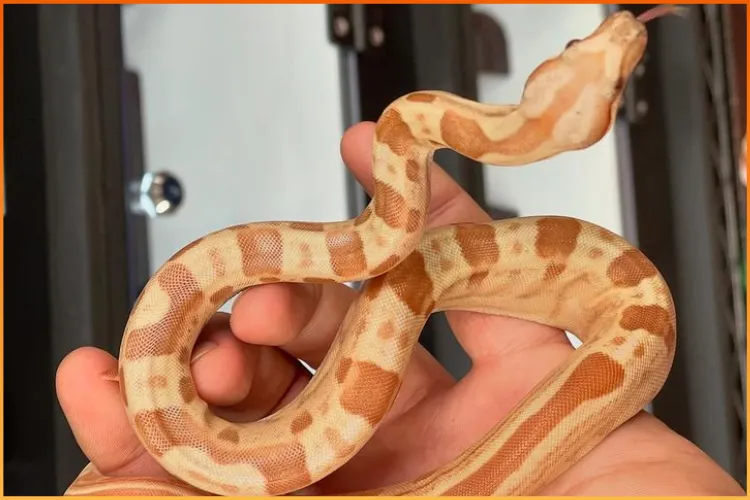
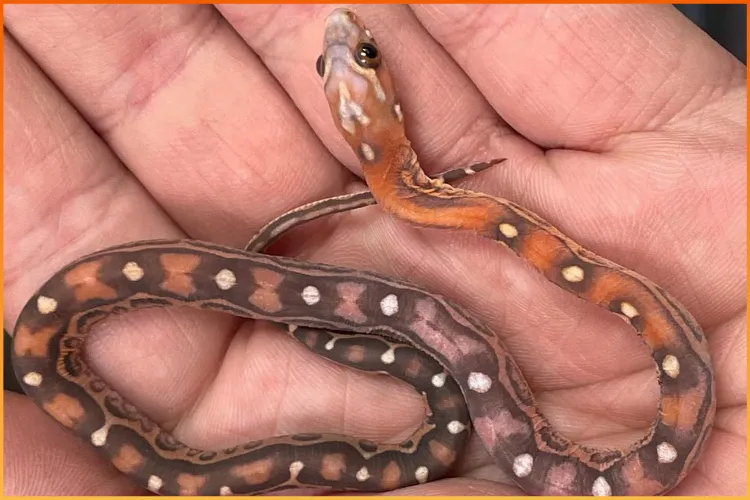
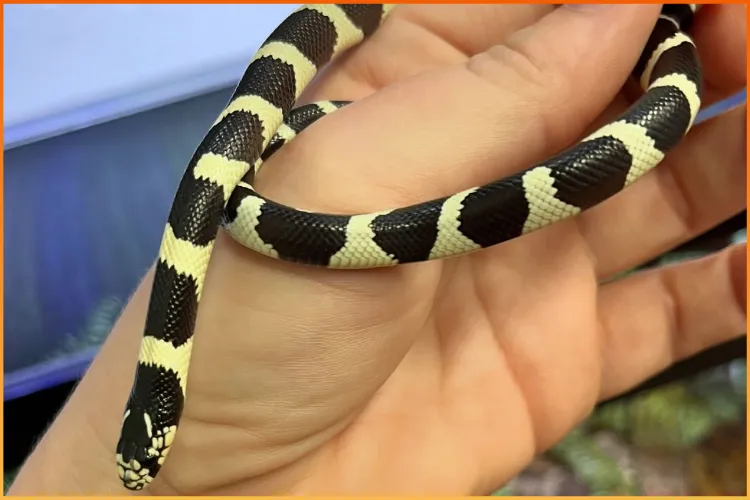
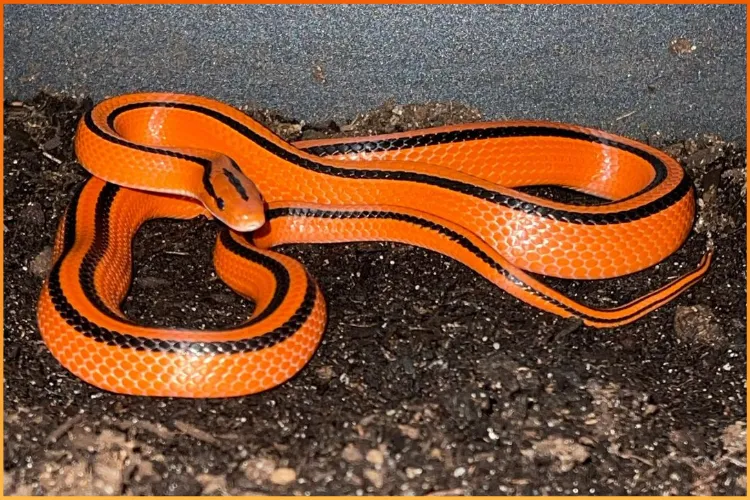
Non-Venomous Types of Snakes That Make Great Petsus Snakes
Non-venomous snakes are some of the most popular choices for pet owners, thanks to their safety and ease of handling. Among the different types of snakes available, non-venomous species stand out as excellent companions for homes, offering a wide range of sizes, colors, and temperaments. These snakes are not only fascinating to watch but also relatively simple to care for, making them a great option for both new and experienced keepers. Popular examples include:
- Milk Snakes: Beautifully colored with banded patterns, milk snakes are non-venomous and make excellent display animals. Their vibrant hues and docile behavior have made them a favorite among collectors and beginners alike.
- Garter Snakes: Small, active, and easy to care for, garter snakes are a common sight in the wild and captivity. They require minimal space and are among the few snake species that can adapt to a slightly varied diet, including small fish and insects in addition to rodents.
- Rat Snakes: Great for pest control and fascinating to watch, rat snakes are a versatile choice. Their calm nature and impressive climbing abilities make them stand out among non-venomous species.
Types of Large Constrictor Snakes and Their Care Needs
For enthusiasts drawn to the impressive size and strength of snakes, large constrictors are a truly captivating choice. Among the different types of snakes, these giants stand out for their sheer presence and unique behaviors, making them popular among experienced keepers. However, their size and power come with responsibilities—large constrictors require ample space, specialized enclosures, and experienced handling to ensure both the snake and keeper are safe. Their majestic nature and striking appearances make them a favorite for those ready to take on the challenge.
- Burmese Pythons: Known for their massive size and calm demeanor, Burmese pythons are often described as gentle giants. However, their large size demands significant space and resources, making them suitable only for dedicated keepers.
- Boa Constrictors: Powerful but generally gentle, boa constrictors are a common choice among experienced snake owners. They exhibit a range of beautiful patterns and thrive in environments that replicate their native tropical habitats.
- Reticulated Pythons: With stunning patterns and incredible length, reticulated pythons are truly awe-inspiring. These snakes are best suited to experienced keepers who can accommodate their impressive size and energetic nature.
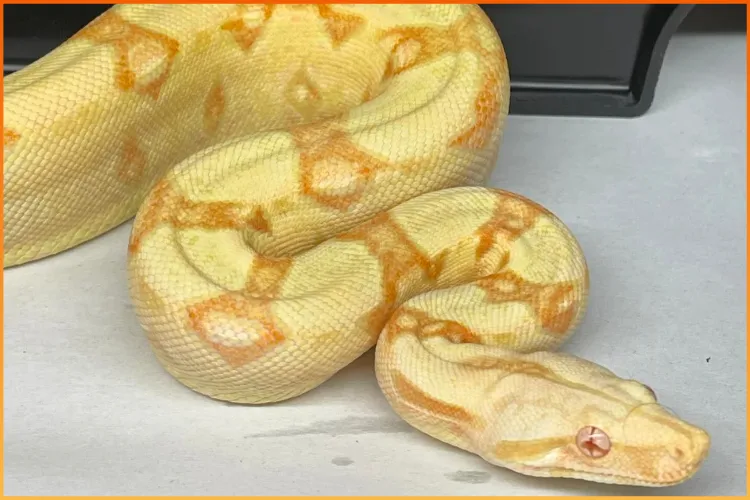
Venomous Types of Snakes: What to Know (Educational Only)
Venomous snakes are among the most intriguing and misunderstood creatures in the animal kingdom. While they are not recommended as pets, they remain an important part of the different types of snakes that people study and admire. These snakes play a crucial role in maintaining ecological balance, often acting as natural pest controllers by regulating populations of rodents and other prey animals. Their unique adaptations, such as venom delivery systems and striking defensive behaviors, make them fascinating subjects for education and conservation efforts.
- Cobras: Iconic hooded snakes known for their defensive displays, cobras are a symbol of the snake world. Observing their behavior in educational settings can provide valuable insights into the natural world.
- Rattlesnakes: Found in the U.S., these snakes warn predators with their unique rattle. Their role in controlling rodent populations underscores their ecological importance.
- Vipers: Masters of camouflage with potent venom, vipers demonstrate how evolution equips animals to survive and thrive in challenging environments.
Exotic and Rare Types of Snakes for Advanced Keepers
For advanced keepers, exotic and rare snakes provide an exciting opportunity to care for some of the most unique and breathtaking species among the different types of snakes. These extraordinary reptiles often feature striking colors, unusual patterns, or uncommon behaviors that set them apart from more familiar species. However, their rarity often comes with specialized care requirements, making them best suited for experienced keepers who are prepared to meet their needs. Caring for these one-of-a-kind snakes is both a challenge and a privilege, offering a deeper connection to the incredible diversity of the reptile world.
- Green Tree Pythons: Stunning emerald coloration and arboreal habits make green tree pythons a visual delight. Their care requires attention to detail, but the reward is a breathtaking display animal.
- Sunbeam Snakes: Their iridescent scales look like living rainbows, capturing light in mesmerizing ways. These shy and secretive snakes thrive in moist environments and are a rare treasure for dedicated keepers.
- Mandarin Rat Snakes: Rare and highly sought after for their striking patterns, mandarin rat snakes are a gem in the snake-keeping world. Their care demands meticulous attention, but their beauty makes the effort worthwhile.
Choosing the Right Snake
Lifestyle and Care Considerations
Choosing the right snake begins with understanding how it will fit into your lifestyle. The different types of snakes have varying care requirements, so it’s important to assess your personal limitations and preferences. Are you ready to invest time in creating a proper habitat that includes heating, lighting, and humidity controls? While some species, like corn snakes, are forgiving and adaptable, others, such as green tree pythons, demand a more precise and controlled environment to thrive.
Budget is another crucial consideration. Initial costs, such as enclosures, heating equipment, substrates, and decor, can vary widely depending on the species. For instance, larger snakes like boa constrictors require more spacious enclosures and may have higher feeding costs due to their size. Understanding these financial commitments ensures you can provide the best care for your pet without unexpected strain.
Experience level plays a significant role in selecting a snake. Beginners are often drawn to species with easygoing temperaments and straightforward care needs, such as ball pythons or corn snakes. These snakes offer a manageable introduction to the world of reptile keeping. More advanced keepers might enjoy the challenge of caring for exotic or high-maintenance species, such as green tree pythons or large constrictors, which require greater attention to detail and advanced husbandry skills.
By considering these factors, you can make an informed choice and set both yourself and your snake up for long-term success. Whether you’re exploring the world of beginner-friendly snakes or looking for more exotic varieties, understanding the unique traits of different types of snakes is key to a fulfilling and rewarding experience.
Where to Start
If you’re new to snakes, beginning with a species like a corn snake or ball python is a smart choice. These snakes are hardy, adaptable, and thrive in a variety of setups. Corn snakes, for example, are forgiving and offer a wide range of color morphs to choose from. Ball pythons are known for their calm demeanor and manageable size, making them a favorite among first-time owners.
Experienced keepers looking for a challenge might consider species like green tree pythons or even large constrictors like Burmese pythons. These snakes require more specialized care but offer a rewarding experience for those willing to meet their needs.
For every keeper, research is key. Understanding the specific requirements and behaviors of different types of snakes ensures you can provide the best possible care and enjoy a long, fulfilling relationship with your new pet.
FAQs About Snakes
Are snakes good for beginners?
Absolutely! Many types of snakes, like corn snakes and ball pythons, are low-maintenance and beginner-friendly. These snakes typically have simple care requirements and gentle temperaments, making them an excellent introduction to reptile keeping. Corn snakes, for instance, are highly adaptable and thrive in various setups, while ball pythons are known for their relaxed nature and manageable size. Both species are forgiving of minor care mistakes, which is especially helpful for those new to handling reptiles.
What do snakes eat?
Most pet types of snakes eat frozen-thawed rodents like mice or rats. The type and size of prey depend on the species and size of the snake. Juveniles typically require smaller prey, such as pinky mice, while larger species, like boa constrictors, need appropriately sized rats. Feeding snakes frozen-thawed prey is not only safer than live feeding but also more convenient for the keeper. It’s important to ensure the prey is thoroughly thawed and warmed to mimic the temperature of live prey, encouraging the snake’s natural feeding response.
How often do snakes eat?
Juvenile types of snakes may eat weekly, as they are still growing and require more frequent nutrition. Adult snakes, on the other hand, can typically eat every 1-2 weeks depending on their size, activity level, and species. For example, smaller species like garter snakes may need more frequent feedings, while larger constrictors, such as Burmese pythons, can go longer between meals. Overfeeding should be avoided to prevent obesity, a common issue in captive snakes. Observing your snake’s behavior and body condition is key to maintaining a healthy feeding schedule.
Conclusion
From beginner-friendly snakes like corn snakes and ball pythons, known for their gentle temperaments and manageable care, to exotic rarities like green tree pythons and sunbeam snakes that captivate with their beauty and mystique, the diversity among snakes ensures there’s a perfect fit for everyone. Each species brings its own set of characteristics and care requirements, offering an exciting journey into the world of reptile keeping.
Whether you’re just starting your journey with snakes or you’re a seasoned herpetology enthusiast looking for your next companion, the Boise Reptile Company is here to help. With our wide selection of healthy, ethically sourced snakes and high-quality supplies, we’re committed to supporting you at every step. Explore the different types of snakes and discover the one that’s right for you—your next scaly friend is waiting!
Final Thoughts: Choosing the Right Type of Snake for You
Snakes are incredible pets, each with its own personality and care needs. Whether you’re looking for an easygoing corn snake, a massive boa constrictor, or an exotic green tree python, there’s a type of snake for every keeper.
👉 Want to see these snakes in person? Visit Boise Reptile Company to check out our selection of beginner-friendly, non-venomous, and exotic snakes!
